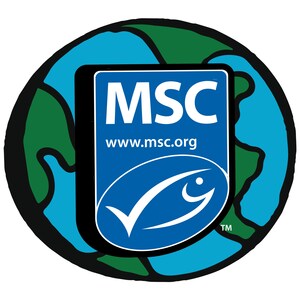Seafood that's good for you
The MSC GlobeScan study revealed 77% of Americans regularly purchase seafood; that's good news considering the 2015-2020 Dietary Guidelines for Americans recommends the general population eat at least 8 ounces of seafood per week. However, USDA studies show a majority of Americans still don't meet the recommendation for fish and shellfish consumption.
Seafood is a high-protein option that provides good nutrients, vitamins and essential omega-3 fatty acids, which are beneficial for the brain, heart and eyes, as well as overall health and wellness. To get the most nutritional benefits, non-profit organization and MSC partner Seafood Nutrition Partnership recommends eating seafood at least twice a week and including fatty fish in those servings which have higher amounts of omega-3s. Throughout October, engage with @MSCBlueFish on social media and use #FeelGoodSeafood for recipe inspiration and seafood preparation ideas for products carrying the MSC blue fish label, as well as stories from fishermen and women who work hard to protect our ocean resources.
Seafood that's good for the ocean, too
Seafood consumers in the U.S. are increasingly demanding independent verification of sustainability claims by brands. As the first global science-based seafood certification program to be recognized for rigor and credibility by the United Nations, the MSC with its blue fish label is meeting this demand. By working with the fishing industry, scientists, and conservation groups, MSC helps to create the world's leading standard for sustainable seafood. Specifically, in the MSC program, certified sustainable seafood is fished from stocks with healthy populations; caught with minimal impact on the marine environment; and in an area with effective, responsive, and responsible management. Today, more than 10 million tons of seafood worldwide comes from more than 300 MSC certified fisheries, and almost 15% of all global catch is now certified to MSC standards. In the U.S. there are more than 3,000 products with the MSC blue fish label in stores – including in the frozen section, canned aisle, fresh fish counter, and event pet food and supplements.
By taking the simple step to look for the blue fish when purchasing seafood, shoppers can help protect oceans from overfishing, support fishermen and fishing communities, and promote traceability from ocean to dish. During Seafood Month engaging outdoor ads in Washington, D.C., Los Angeles and Seattle will encourage Americans to follow along by choosing seafood products with the MSC blue fish to know they're making responsible seafood decisions that ensure the availability of wild seafood for generations to come.
"Now more than ever, we need to work together to protect our oceans," said Brian Perkins, regional director for the Americas at the MSC Marine Stewardship Council. "Sustainable fishing reduces environmental impacts, keeps fish populations healthy, and protects hardworking coastal communities. We hope that by choosing the MSC blue fish this Seafood Month, – and every month - you feel extra good knowing you've chosen seafood that's 'good for you and the ocean too'."
ABOUT THE MARINE STEWARDSHIP COUNCIL
The Marine Stewardship Council (MSC) is an international non-profit organization. Our vision is for the world's oceans to be teeming with life, and seafood supplies safeguarded for this and future generations. Our blue label and certification program recognizes and rewards sustainable fishing practices and is helping create a more sustainable seafood market. More than 370 fisheries in over 36 countries are certified to the MSC's Standard. These fisheries have a combined annual seafood production of over eleven million metric tons, representing almost 15% of global marine catch. More than 38,000 seafood products worldwide carry the MSC label. For more information visit www.msc.org or follow @MSCBlueFish on social media.
Media Contact
Robin Zimmerman
SchroderHaus
[email protected]
210-787-9776
SOURCE Marine Stewardship Council

Related Links
http://www.msc.org






Share this article